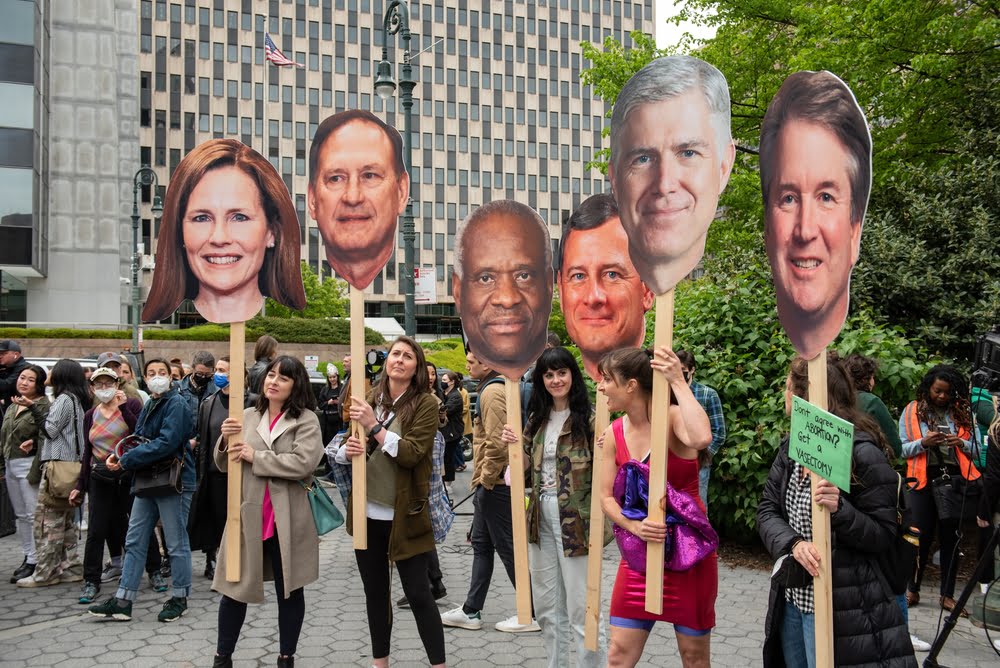Written by Adewale A. Maye
This article originally appeared on the Economic Policy Institute’s Working Economics blog.
In the wake of the appalling decision to overturn Roe v. Wade, the Supreme Court is yet again at the forefront of repealing sweeping legislative precedent that will change the lives of millions of Americans. Following arguments from Harvard University and the University of North Carolina on whether race-conscious admission programs are lawful, the Supreme Court is expected to overturn affirmative action in college admissions later this year.
Similarly, the Supreme Court will hear arguments later this month over President Biden’s student loan debt relief plan that would forgive at least $10,000, and up to $20,000, for tens of millions of federal student loan borrowers. The Supreme Court will likely strike down the plan.
Both affirmative action and student loan debt forgiveness are critical measures for college access and completion for students of color. Sadly, these statutes, along with many others, have been targeted and threatened within the courts over the years—leaving students of color to bear more acute barriers to higher education and more disparate socioeconomic outcomes.
Affirmative action increases access to higher education for students of color
Despite the United States being over half a century removed from the pivotal Brown v. Board of Education decision outlawing segregation, the legality of universities using affirmative action as a tool for broader integration and diversity within their student bodies has consistently been a topic of dispute. In 1978, the Supreme Court upheld the use of race as one factor in choosing among qualified applicants for admission in the Regents of the University of California v. Bakke ruling. In the several decades that followed, public and private universities have considered race and ethnicity as one of the many factors in their admissions process, but not without concerted efforts to roll back race-conscious admissions programs on the state level.
Beginning in 1996, California was the first state to ban affirmative action in public universities for college admissions. As of now, seven additional states—Arizona, Florida, Michigan, Nebraska, New Hampshire, Oklahoma, and Washington—have banned public universities from considering race in admissions. Consequently, an abundance of research has indicated that college enrollment for racial and ethnic groups has decreased at selective universities and graduate programs following the enactment of these bans. One study estimated that students of color experience a 23 percentage point decline in likelihood of admission to highly selective public colleges after an affirmative action ban goes into effect.
While numerous studies have indicated that state bans on affirmative action significantly hinder college diversity and hurt students of color the most, many state policymakers believe that race-neutral policy is a key solution to avoid further discrimination. These policymakers are wrong. Instead, race-neutral policy simply maintains longstanding inequities and operates within the parameters of existing inequality.
Many of the arguments against race-conscious decision-making in college admissions negate the systemic and structural hurdles that many students of color face within higher education. For example, although college enrollment and completion rates over the past few decades have increased, Black and Latino students are more underrepresented at top universities than they were 35 years ago.
In many states, Black enrollment at flagship universities lags significantly behind the share of Black students completing their high school education. For example, in 2019, the share of Black public high school graduates was 17% in Michigan, 37% in South Carolina, and 49% in Mississippi. However, the share of Black college freshmen enrolled that fall semester at flagship universities was only 4% at the University of Michigan, 6% at the University of South Carolina, and 10% at the University of Mississippi. These gaps in high school completion and Black freshman enrollment demonstrate a concerning trend among top universities and their failure to admit more diverse student bodies.
Overall, the percentage of adults age 25 and older who had completed high school increased for all race and Hispanic origin groups from 2011 to 2021. During this period, high school completion rates increased from 92.4% to 95.1% for the non-Hispanic white population; from 84.5% to 90.3% for the Black population; from 88.6% to 92.9% for the Asian population; and from 64.3% to 74.2% for the Hispanic population. However, despite gains in high school completion, Black and Latino students continue to see double-digit differences in college completion compared with white and Asian graduates. In 2021, the percentage of adults age 25 and older with a bachelor’s degree or higher was 20.6% for Latino people, 28.1% for Black people, 41.9% for white people, and 61% for Asian people.
Student loan debt forgiveness is a gender and racial justice issue
While students of color face structural hurdles to gain admission to top universities, they are also more likely to face financial barriers to completing their degree. Compounding pressures—including the growing cost of college tuition and the crushing implications of high student loan debt—present additional intersectional implications for students of color within higher education.
While more than 44 million borrowers are struggling with student loan debt, Black college students are far more likely to take out federal student loansand owe an overall average of $25,000 more in student loan debt than white college graduates. Following graduation, 48% of Black students owe an average of 12.5% more than they borrowed, while 83% of white students owe 12% less than they borrowed four years after graduation.
The outstanding debt Black students are taking to finance their education is also reinforcing the racial wealth gap. With less family wealth, Black and Latino students end up borrowing more to fund their college education while also taking longer to repay these debts.
Women, and especially Black women, bear the brunt of the student debt crisis. Women hold nearly two-thirds of the $1.7 trillion in student debt in America. The American Association of University Women (AAUW) found that Black women had the largest average student loan debt ($41,466) in 2021, followed closely by Pacific Islander/Hawaiian women ($38,747), American Indian/Alaska Native women ($36,184), and white women ($33,852). Latina women borrowers were the next highest group at $29,302 and Asian women borrowers owed the lowest amounts at $27,606. Both the gender pay gap and racial wealth gap play a significant role in women borrowing more and struggling to repay student loan debt. Canceling student debt is as much a gender issue as it is a racial justice issue and is pivotal to address the intersectional inequalities these groups experience.
As the Supreme Court prepares to hear arguments for and against President Biden’s student loan debt cancellation plan, Black and brown students, borrowers, and families hold their breath as they prepare for another blow to their access to higher education.
If the Supreme Court rules against both affirmative action and student loan debt forgiveness, communities of color would face widening gaps in college access and be further entrenched in a cycle of economic inequality. Race-neutral policy will always fail to reverse the gaps and barriers that exist because of structural racism. Racial equity and racial justice must center the lived experience of systematically excluded communities as well as bear in mind the policies, programs, and institutions that continue to intentionally disempower these communities to this day. Policymakers and the U.S. judicial system have a responsibility to redress the attacks on equal access to higher education and create broader pathways to earn a college degree and achieve economic prosperity.
Adewale A. Maye is a policy and research analyst with the Economic Policy Institute’s Program on Race, Ethnicity, and the Economy. He studies the root causes of racial economic inequality in order to advance inclusive and restorative policy solutions that build equity. His research interests are centered at the intersection of labor economics, the political economy, and inequality.






